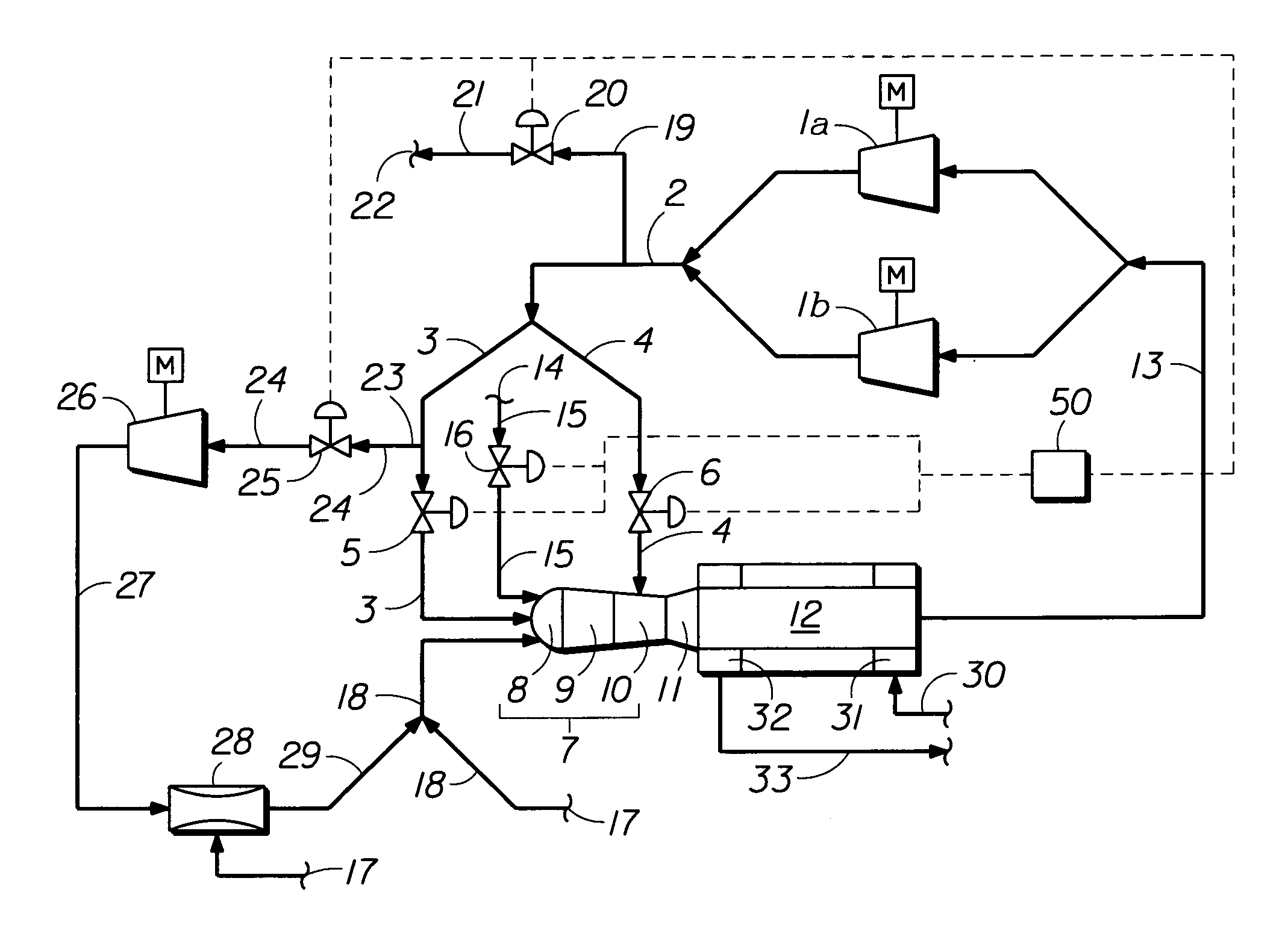Partially-open fired heater cycle providing high thermal efficiencies and ultra-low emissions
- Summary
- Abstract
- Description
- Claims
- Application Information
AI Technical Summary
Benefits of technology
Problems solved by technology
Method used
Image
Examples
Embodiment Construction
[0072]Referring now more particularly to FIG. 1, the heater cycle system is hereafter described with its ‘base configuration’ comprising common employed cycle components, as well as a ‘alternate configuration’ component means that can be alternately incorporated with the ‘base configuration’ heater cycle system components.
[0073]The invention's cycle ‘base configuration’ re-circulated flue gas stream contained within RFG collection manifold 13 can be supplied to either one blower unit or compressor unit 1a or to two or more blower units or compressor units positioned in parallel (as shown by the FIG. 1 with example of 1a and 1b blower units or compressor units) to re-pressurize and discharge the heater re-circulated flue gas into a single common primary re-pressurized RFG conduit manifold 2. Primary re-pressurized RFG conduit manifold 2 comprises parallel end-branch conduit means 3 and 4. Conduit 3 can contain flow control valve means 5 for the end-connected transfer of the controlle...
PUM
 Login to View More
Login to View More Abstract
Description
Claims
Application Information
 Login to View More
Login to View More - R&D
- Intellectual Property
- Life Sciences
- Materials
- Tech Scout
- Unparalleled Data Quality
- Higher Quality Content
- 60% Fewer Hallucinations
Browse by: Latest US Patents, China's latest patents, Technical Efficacy Thesaurus, Application Domain, Technology Topic, Popular Technical Reports.
© 2025 PatSnap. All rights reserved.Legal|Privacy policy|Modern Slavery Act Transparency Statement|Sitemap|About US| Contact US: help@patsnap.com


